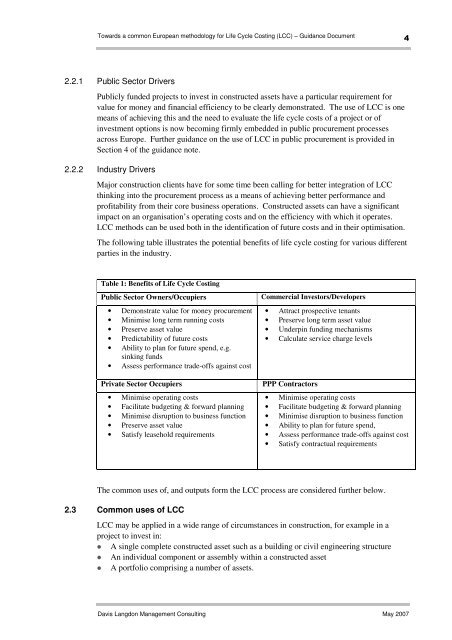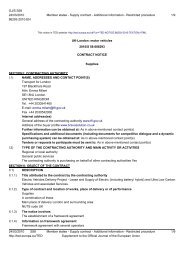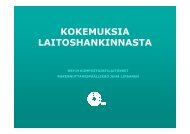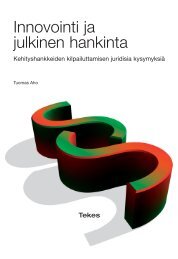Life cycle costing (LCC) as a contribution to sustainable construction ...
Life cycle costing (LCC) as a contribution to sustainable construction ...
Life cycle costing (LCC) as a contribution to sustainable construction ...
Create successful ePaper yourself
Turn your PDF publications into a flip-book with our unique Google optimized e-Paper software.
Towards a common European methodology for <strong>Life</strong> Cycle Costing (<strong>LCC</strong>) – Guidance Document<br />
4<br />
2.2.1 Public Sec<strong>to</strong>r Drivers<br />
Publicly funded projects <strong>to</strong> invest in constructed <strong>as</strong>sets have a particular requirement for<br />
value for money and financial efficiency <strong>to</strong> be clearly demonstrated. The use of <strong>LCC</strong> is one<br />
means of achieving this and the need <strong>to</strong> evaluate the life <strong>cycle</strong> costs of a project or of<br />
investment options is now becoming firmly embedded in public procurement processes<br />
across Europe. Further guidance on the use of <strong>LCC</strong> in public procurement is provided in<br />
Section 4 of the guidance note.<br />
2.2.2 Industry Drivers<br />
Major <strong>construction</strong> clients have for some time been calling for better integration of <strong>LCC</strong><br />
thinking in<strong>to</strong> the procurement process <strong>as</strong> a means of achieving better performance and<br />
profitability from their core business operations. Constructed <strong>as</strong>sets can have a significant<br />
impact on an organisation’s operating costs and on the efficiency with which it operates.<br />
<strong>LCC</strong> methods can be used both in the identification of future costs and in their optimisation.<br />
The following table illustrates the potential benefits of life <strong>cycle</strong> <strong>costing</strong> for various different<br />
parties in the industry.<br />
Table 1: Benefits of <strong>Life</strong> Cycle Costing<br />
Public Sec<strong>to</strong>r Owners/Occupiers<br />
• Demonstrate value for money procurement<br />
• Minimise long term running costs<br />
• Preserve <strong>as</strong>set value<br />
• Predictability of future costs<br />
• Ability <strong>to</strong> plan for future spend, e.g.<br />
sinking funds<br />
• Assess performance trade-offs against cost<br />
Private Sec<strong>to</strong>r Occupiers<br />
• Minimise operating costs<br />
• Facilitate budgeting & forward planning<br />
• Minimise disruption <strong>to</strong> business function<br />
• Preserve <strong>as</strong>set value<br />
• Satisfy le<strong>as</strong>ehold requirements<br />
Commercial Inves<strong>to</strong>rs/Developers<br />
• Attract prospective tenants<br />
• Preserve long term <strong>as</strong>set value<br />
• Underpin funding mechanisms<br />
• Calculate service charge levels<br />
PPP Contrac<strong>to</strong>rs<br />
• Minimise operating costs<br />
• Facilitate budgeting & forward planning<br />
• Minimise disruption <strong>to</strong> business function<br />
• Ability <strong>to</strong> plan for future spend,<br />
• Assess performance trade-offs against cost<br />
• Satisfy contractual requirements<br />
The common uses of, and outputs form the <strong>LCC</strong> process are considered further below.<br />
2.3 Common uses of <strong>LCC</strong><br />
<strong>LCC</strong> may be applied in a wide range of circumstances in <strong>construction</strong>, for example in a<br />
project <strong>to</strong> invest in:<br />
A single complete constructed <strong>as</strong>set such <strong>as</strong> a building or civil engineering structure<br />
An individual component or <strong>as</strong>sembly within a constructed <strong>as</strong>set<br />
A portfolio comprising a number of <strong>as</strong>sets.<br />
Davis Langdon Management Consulting May 2007







